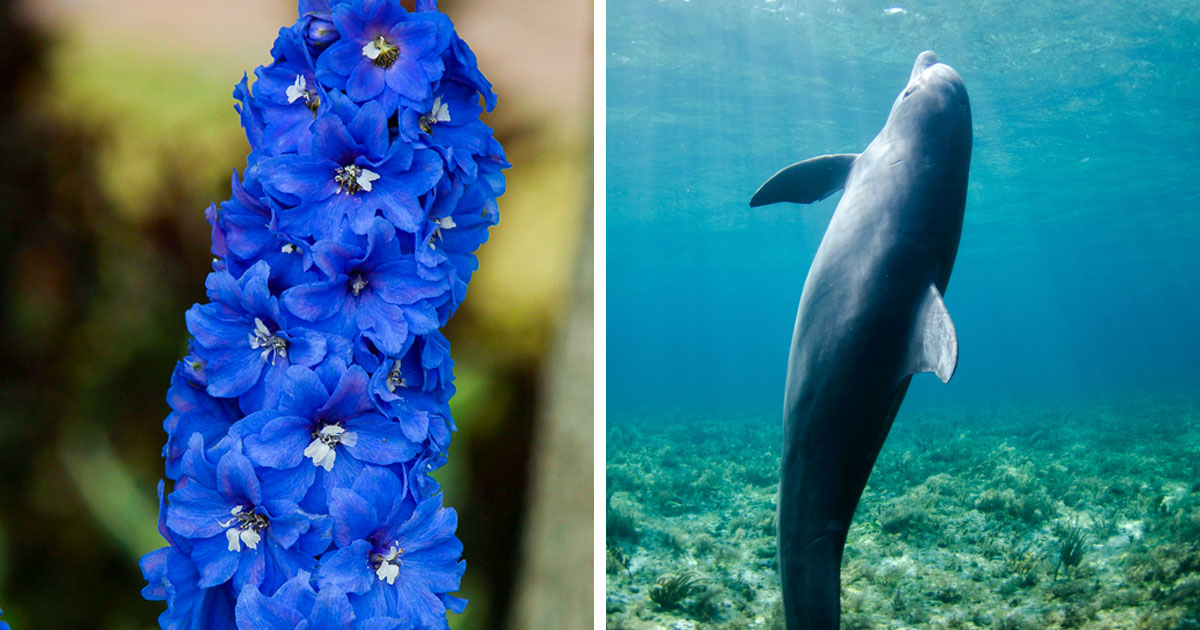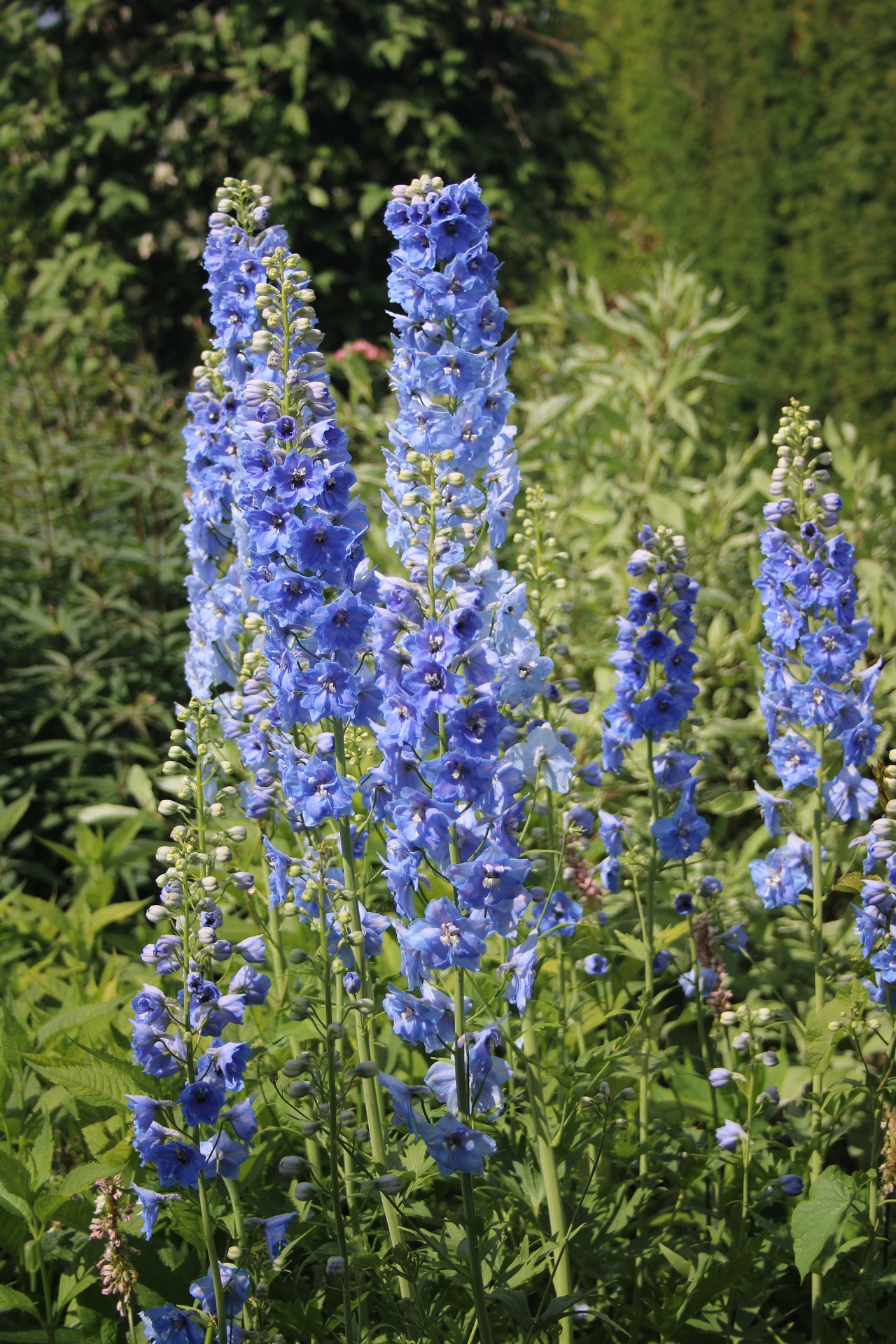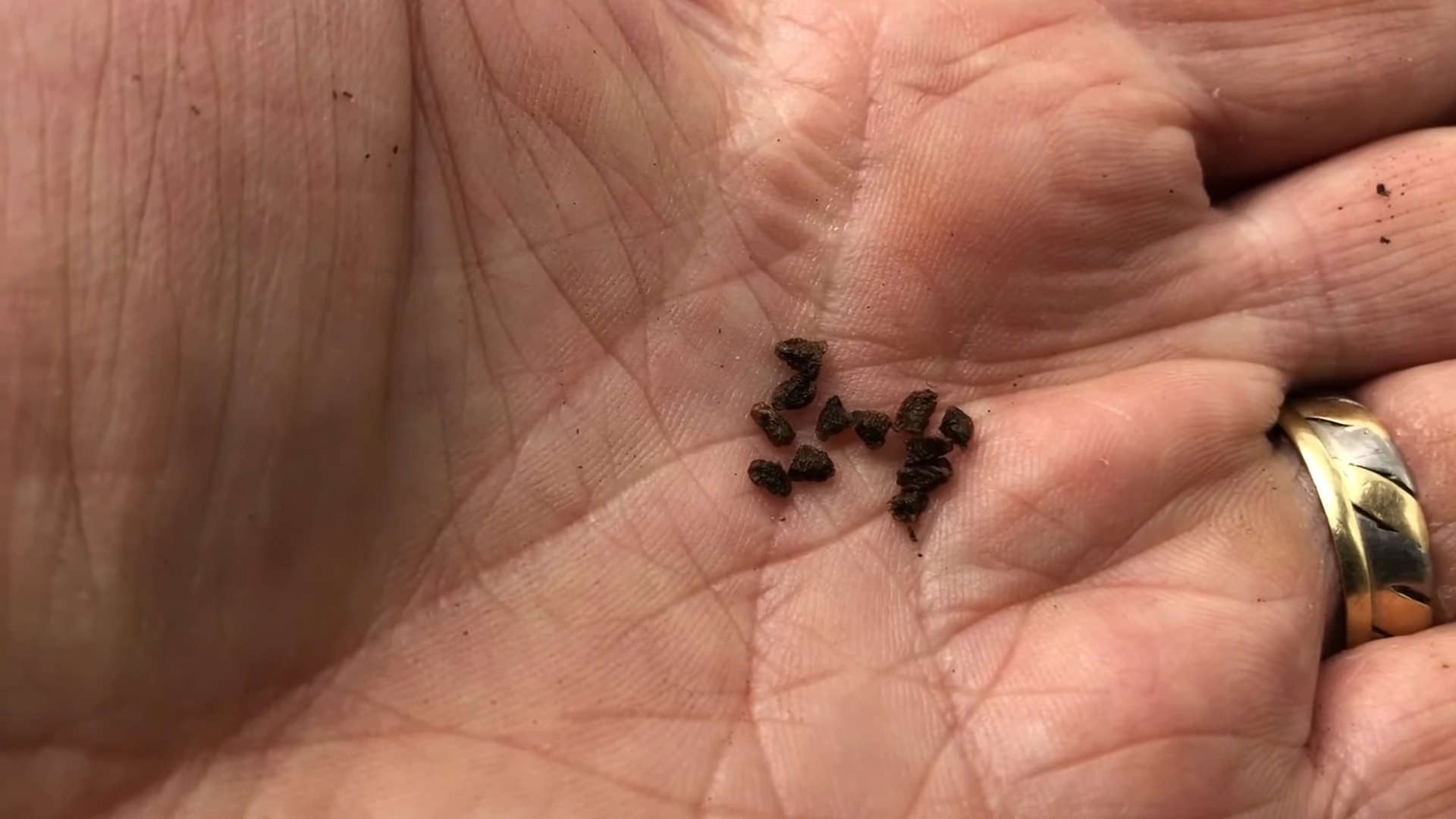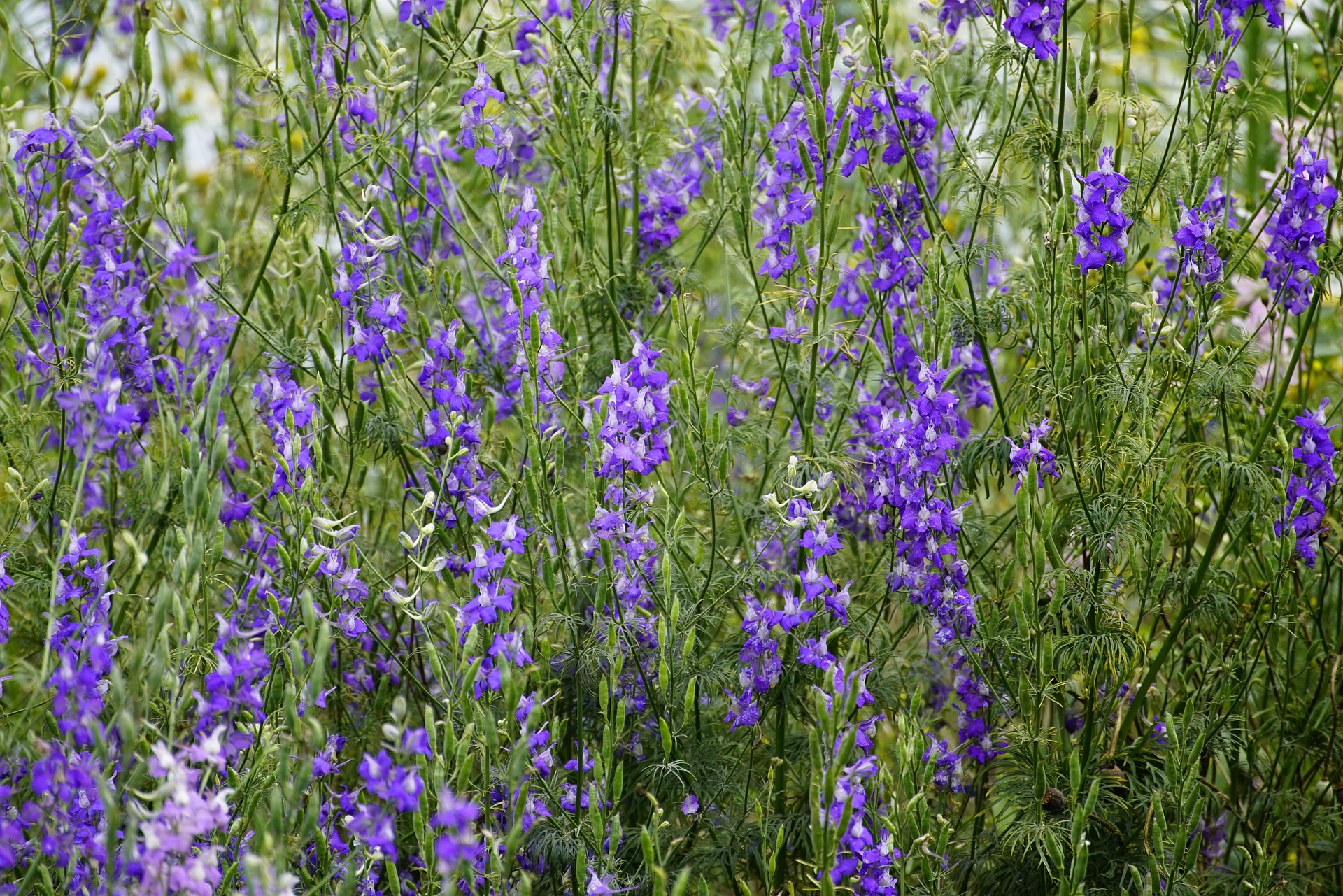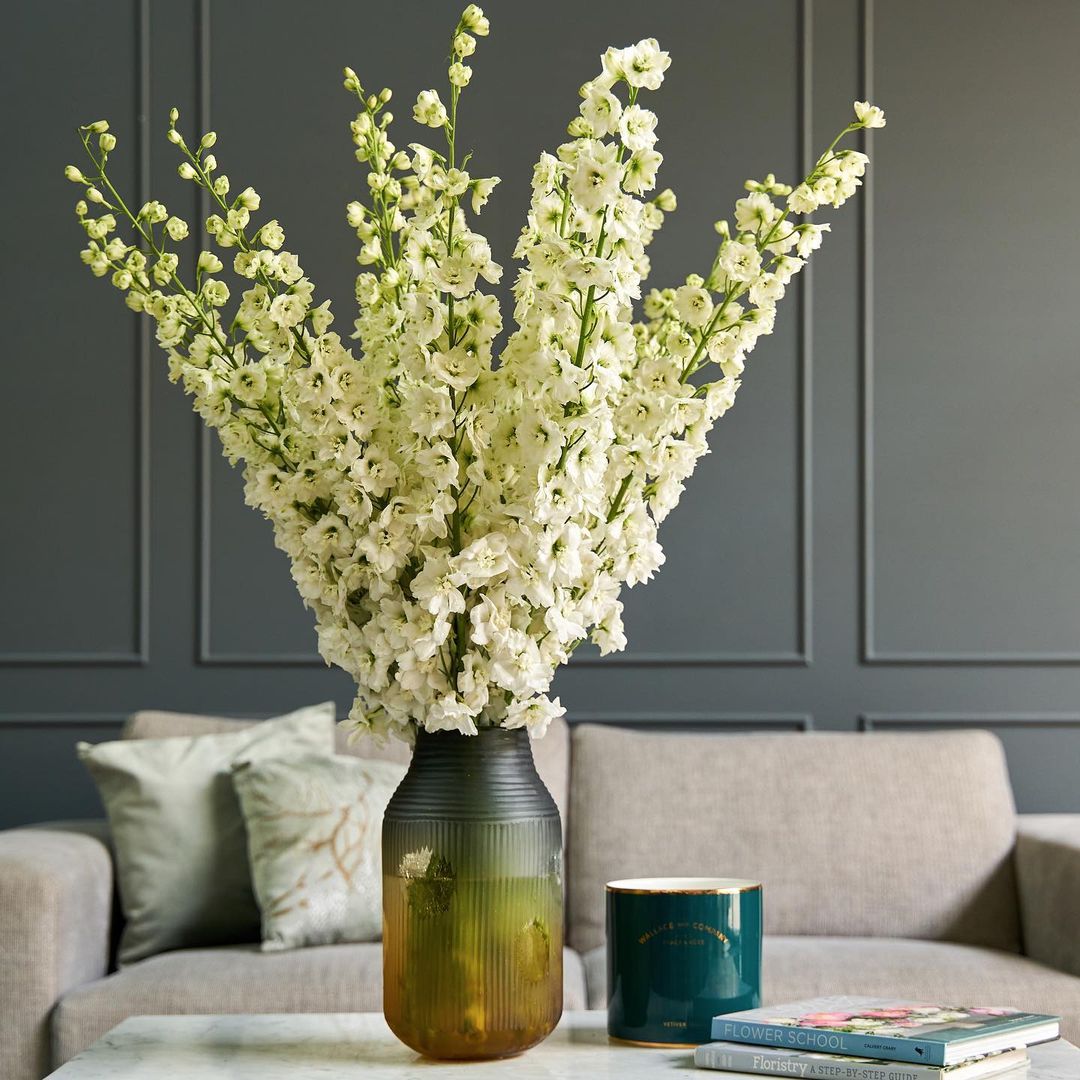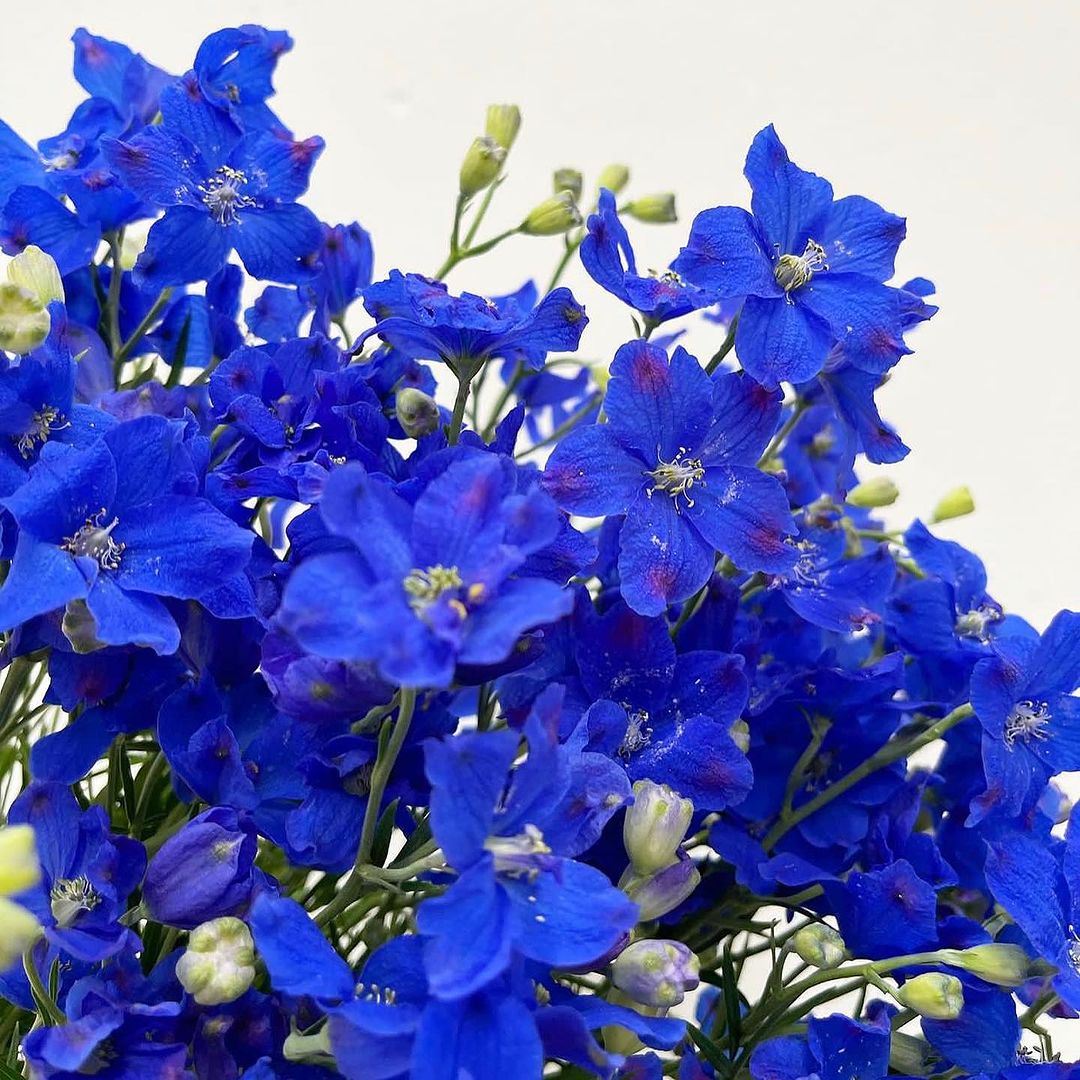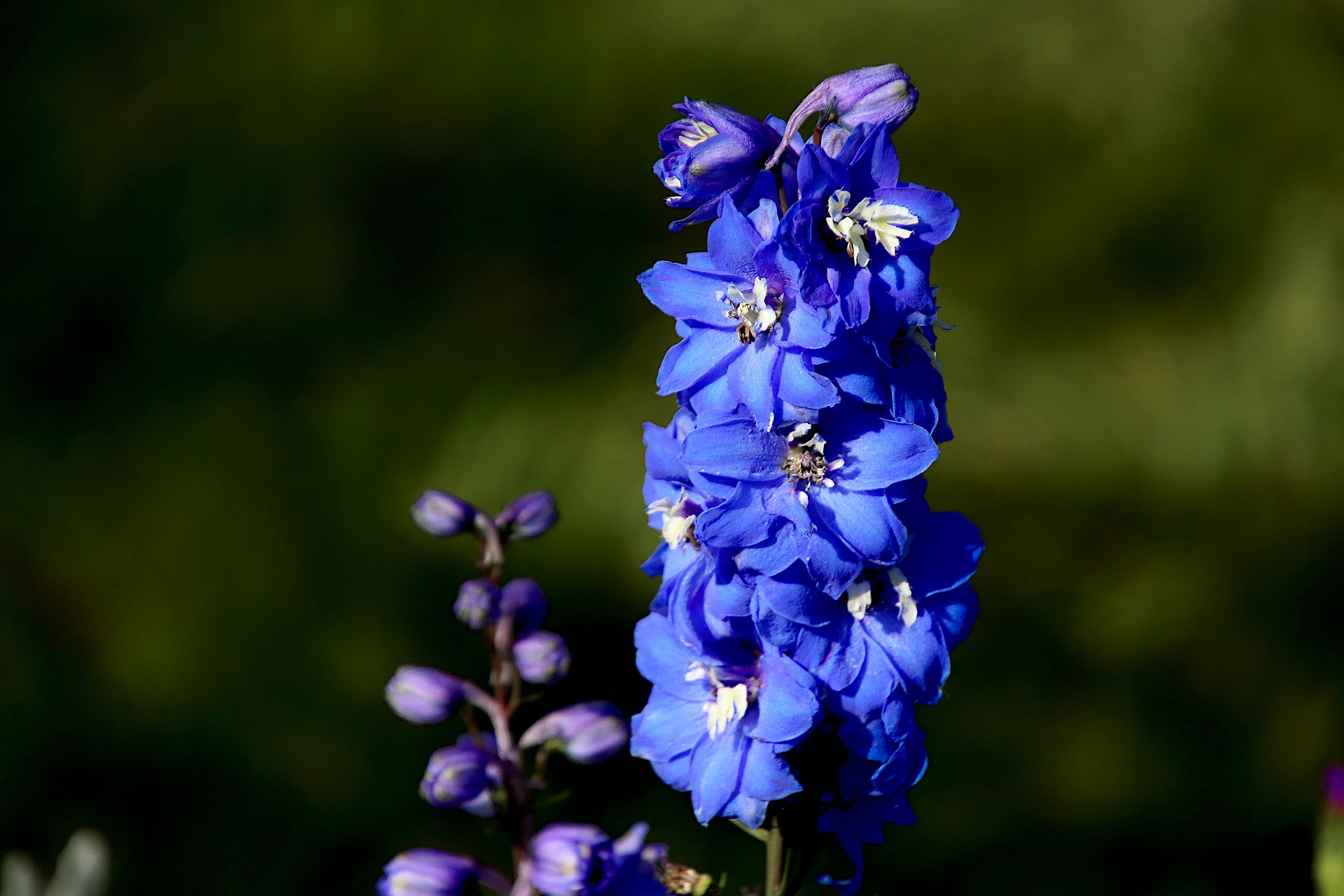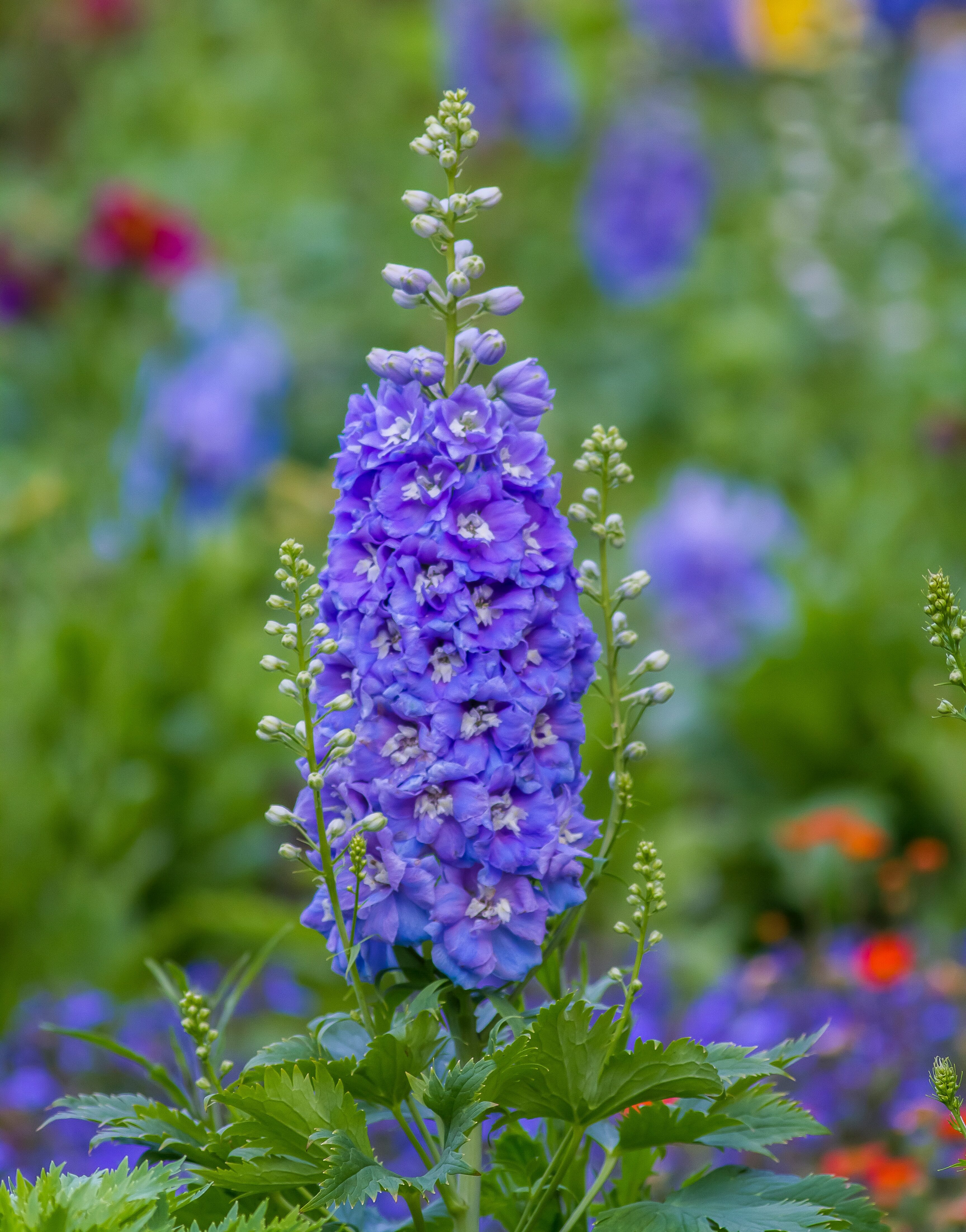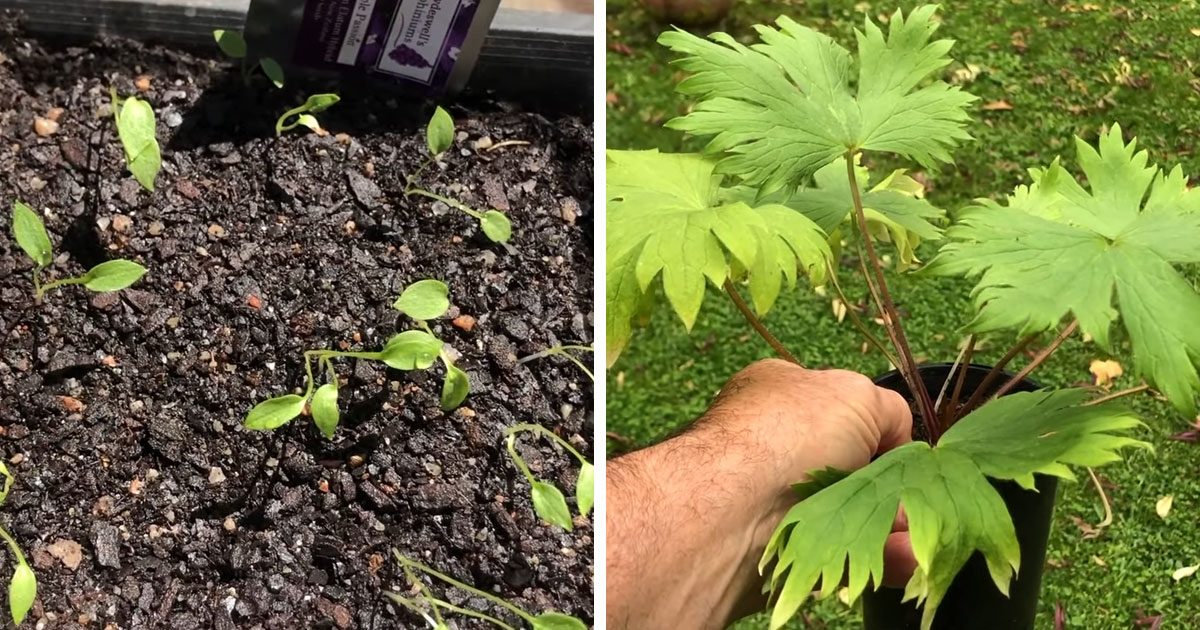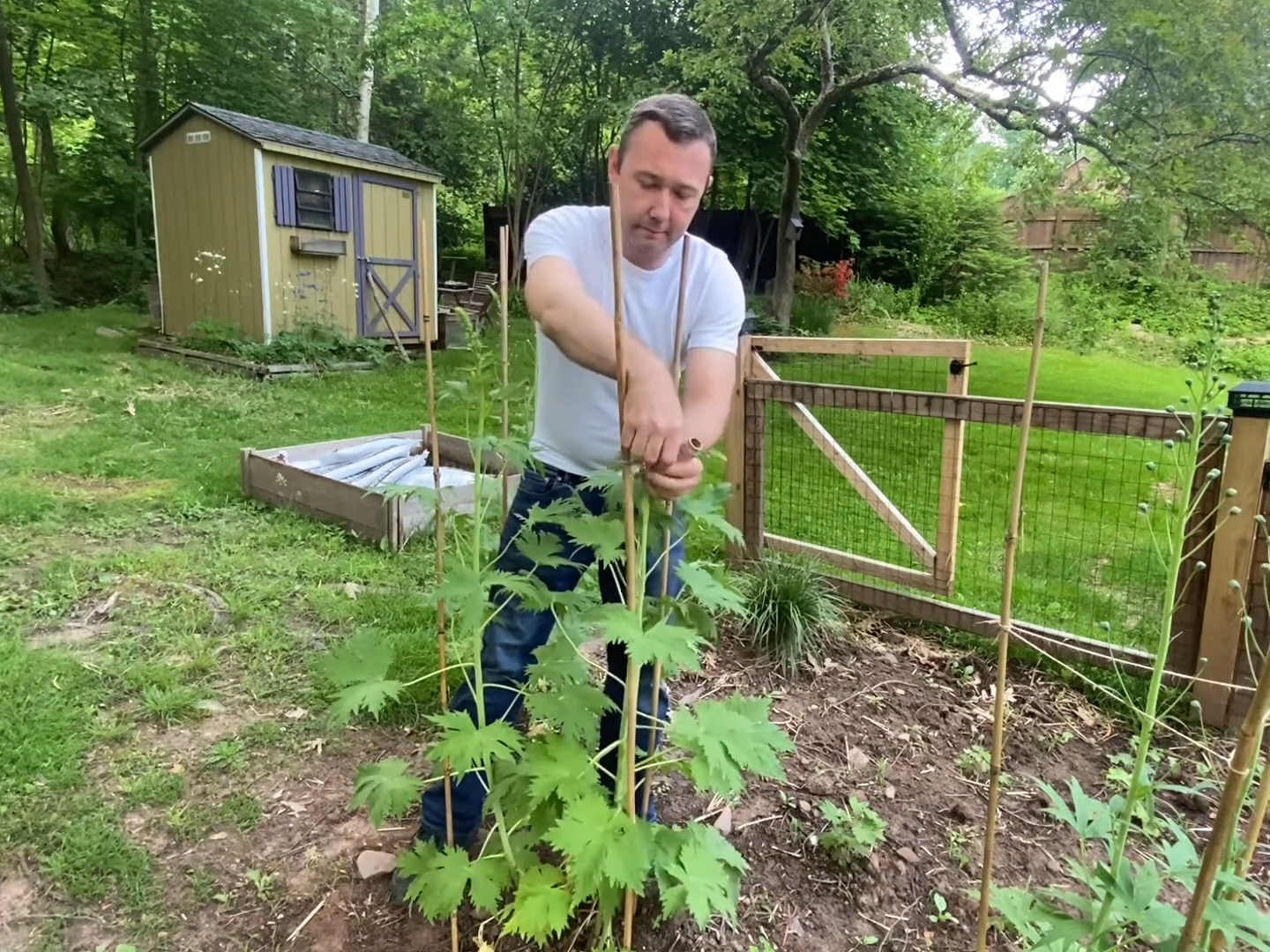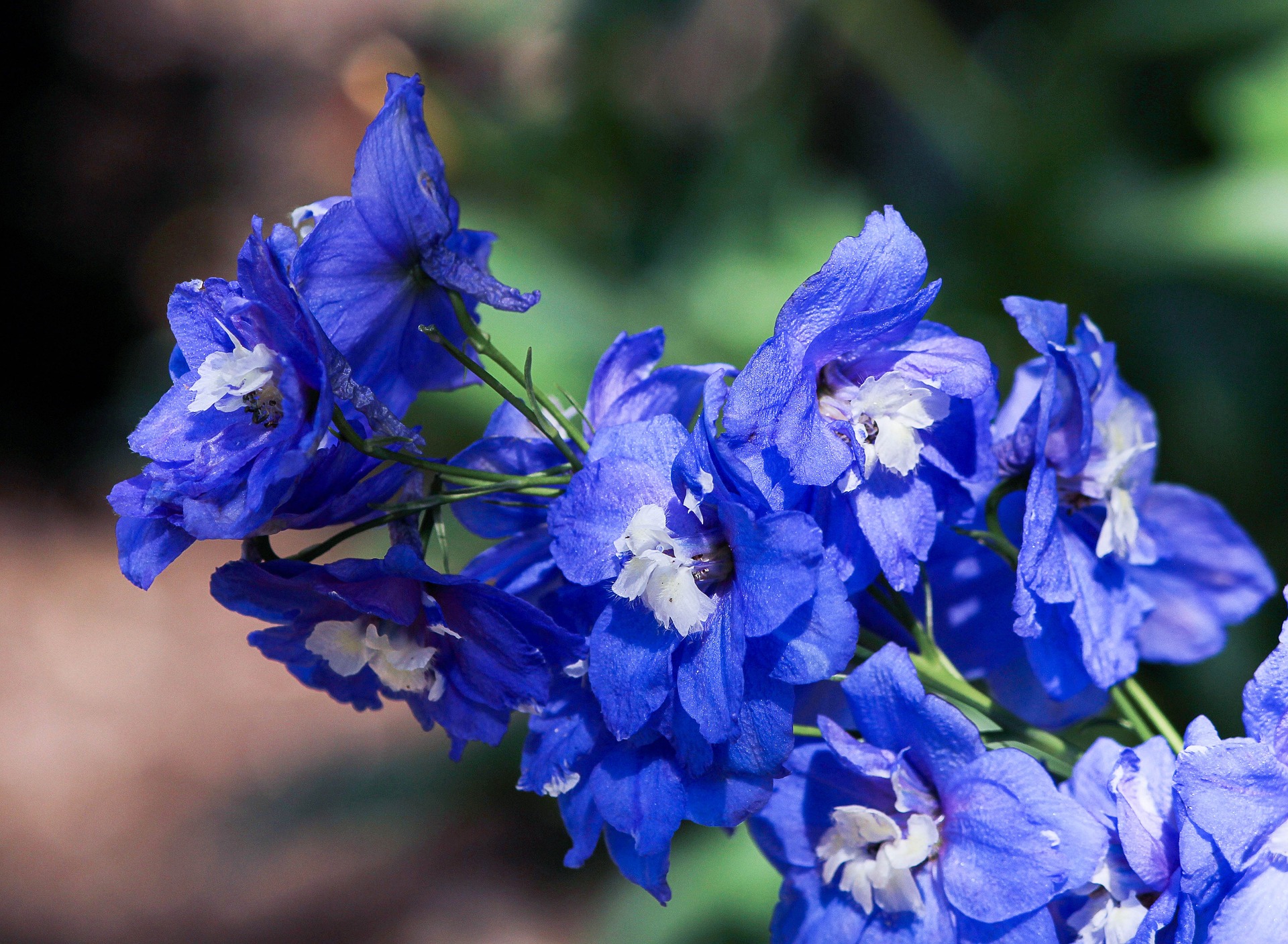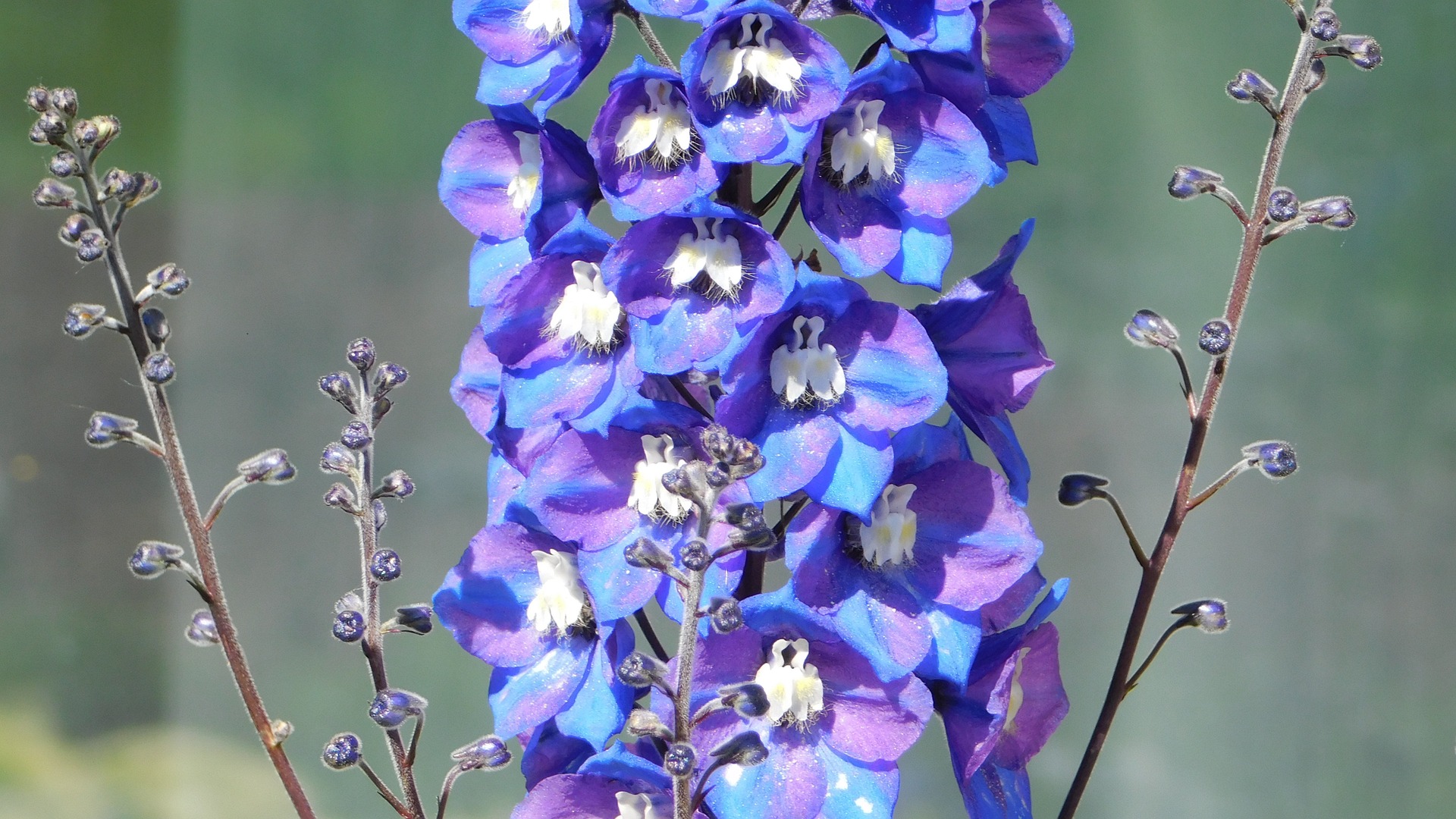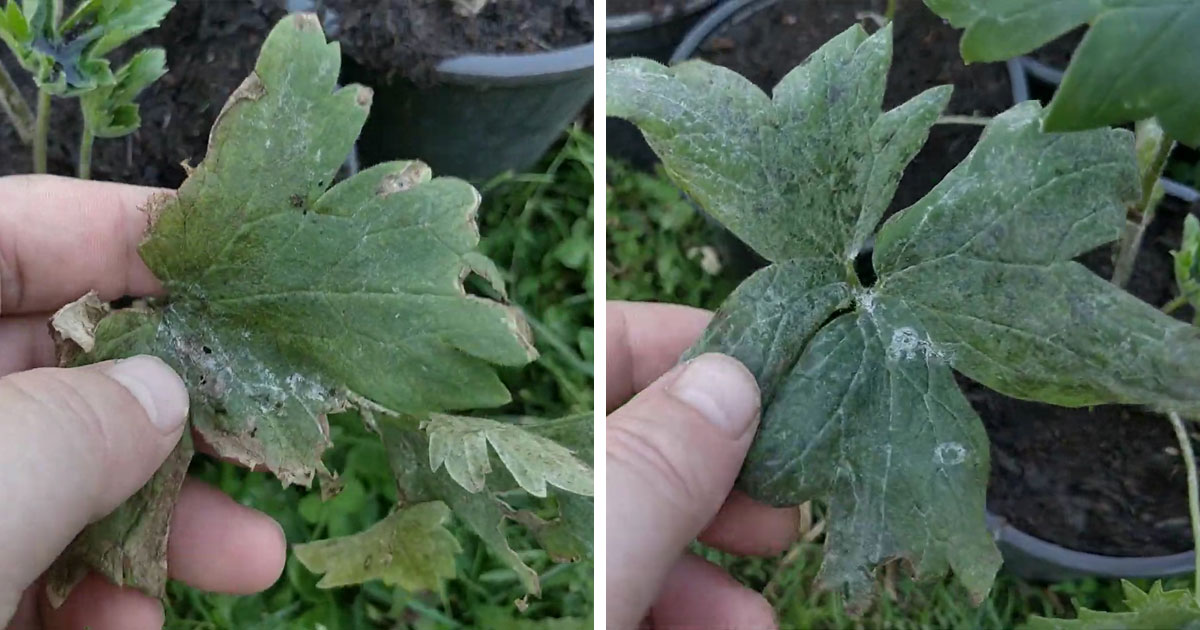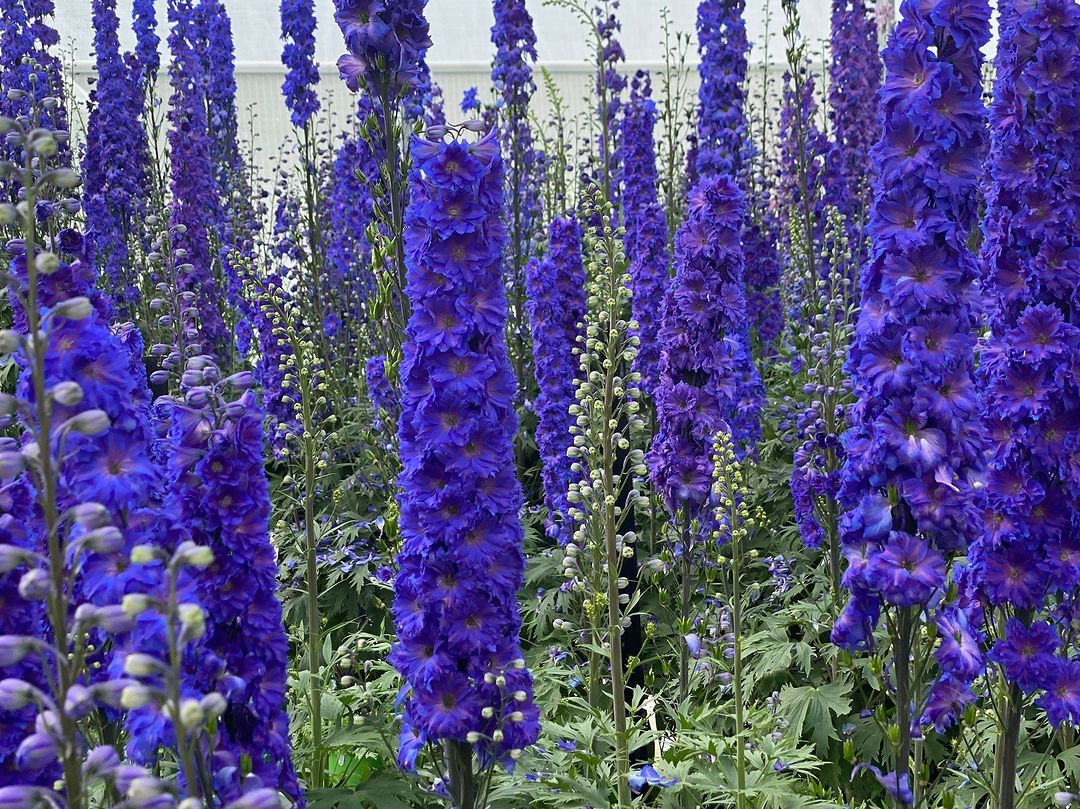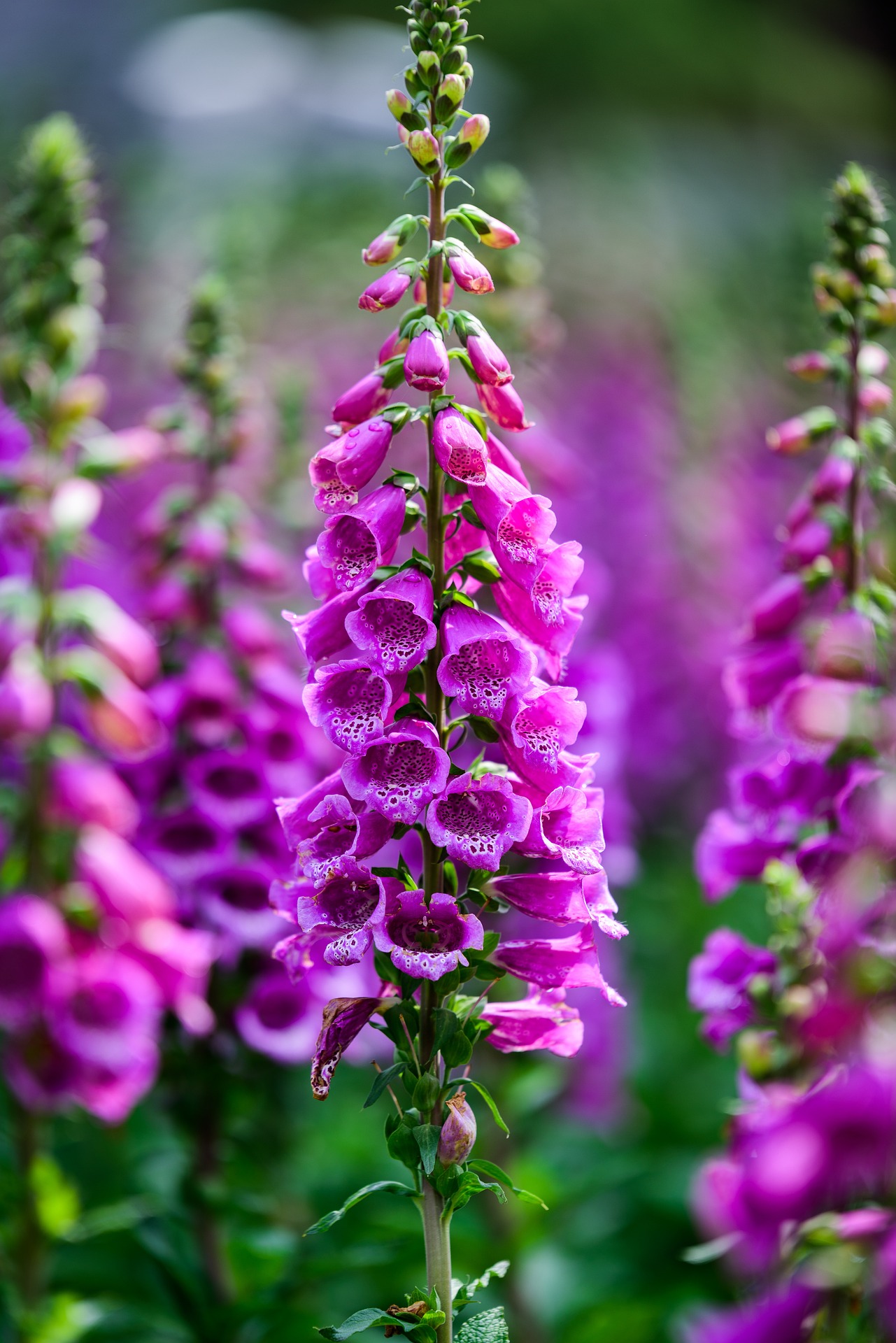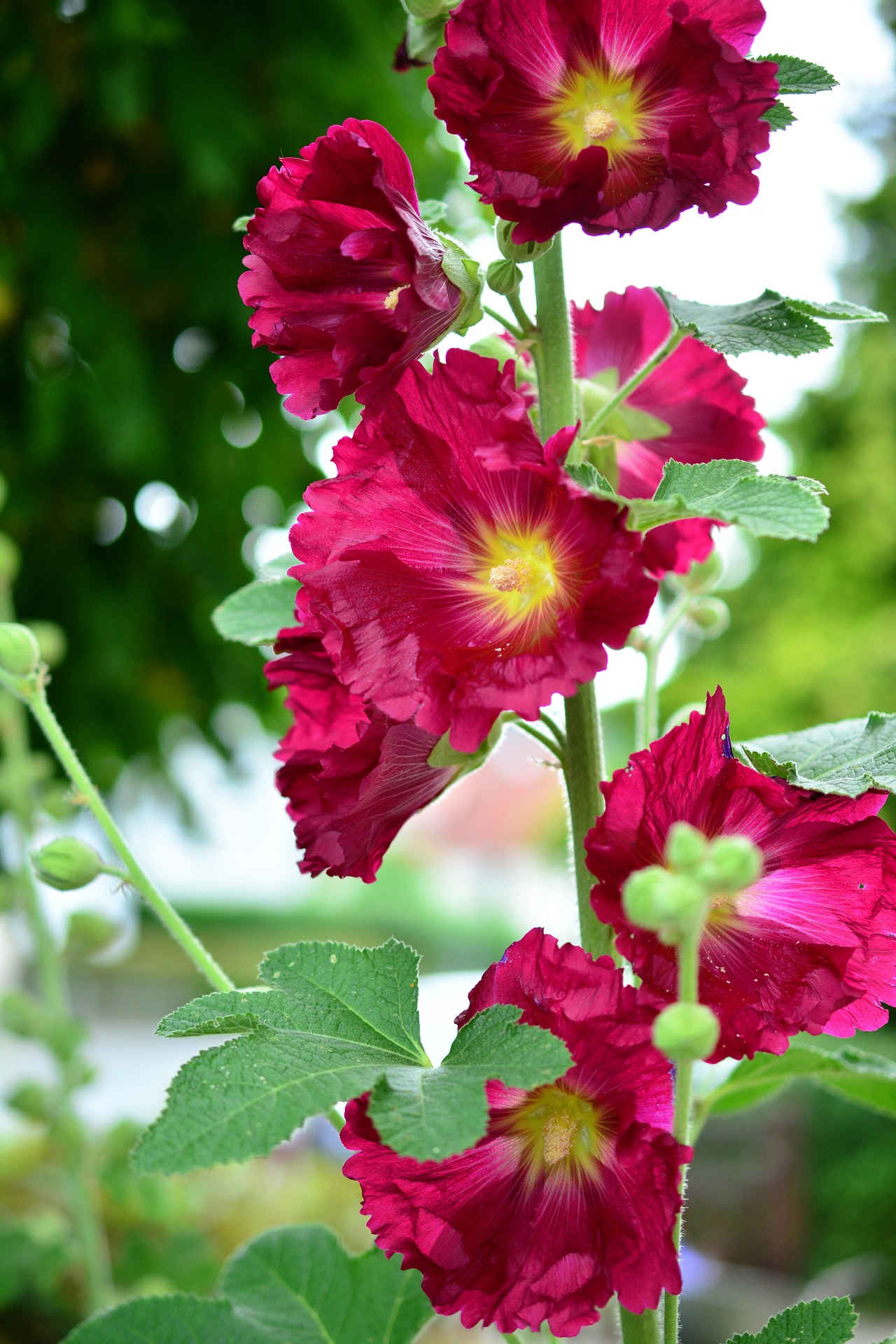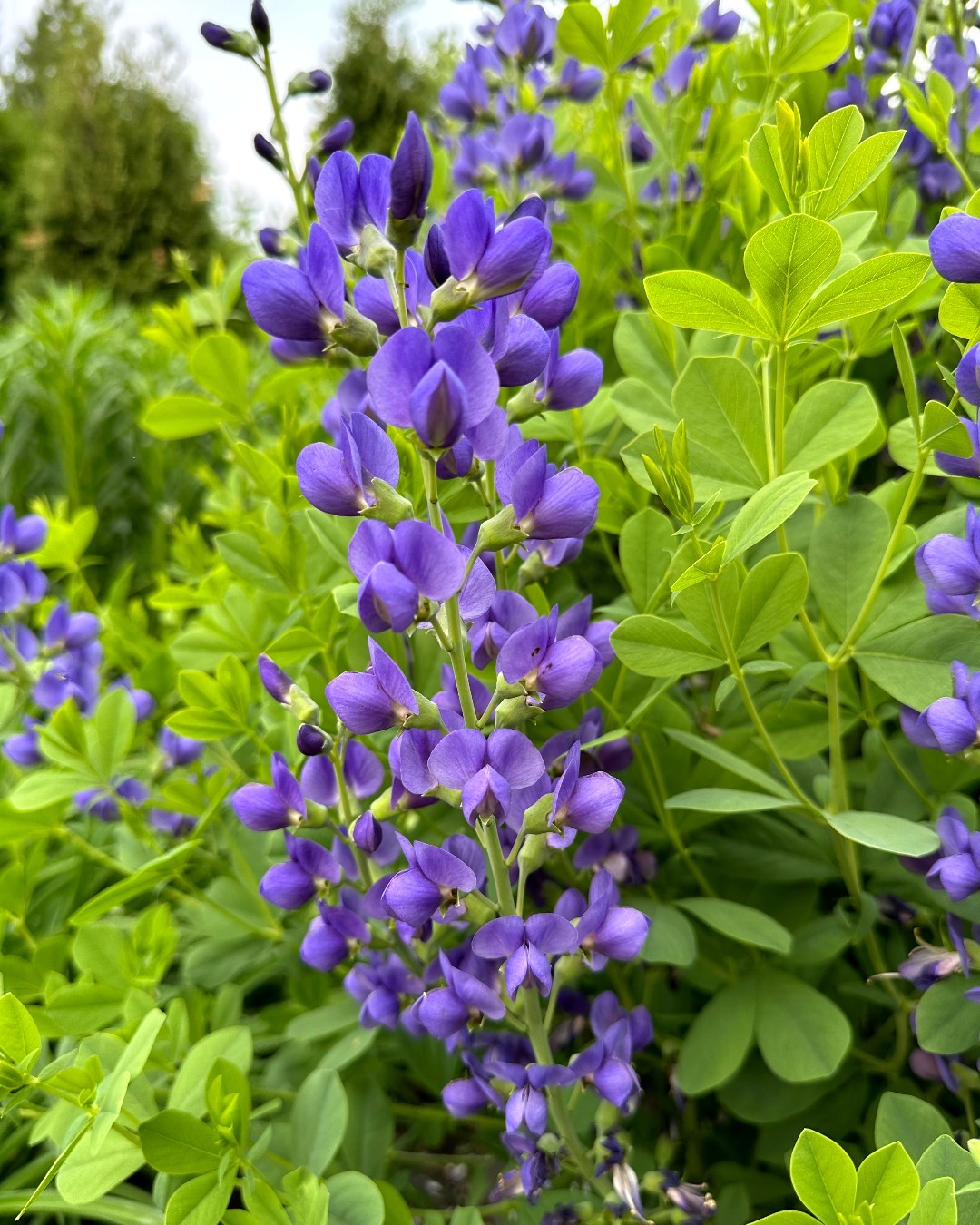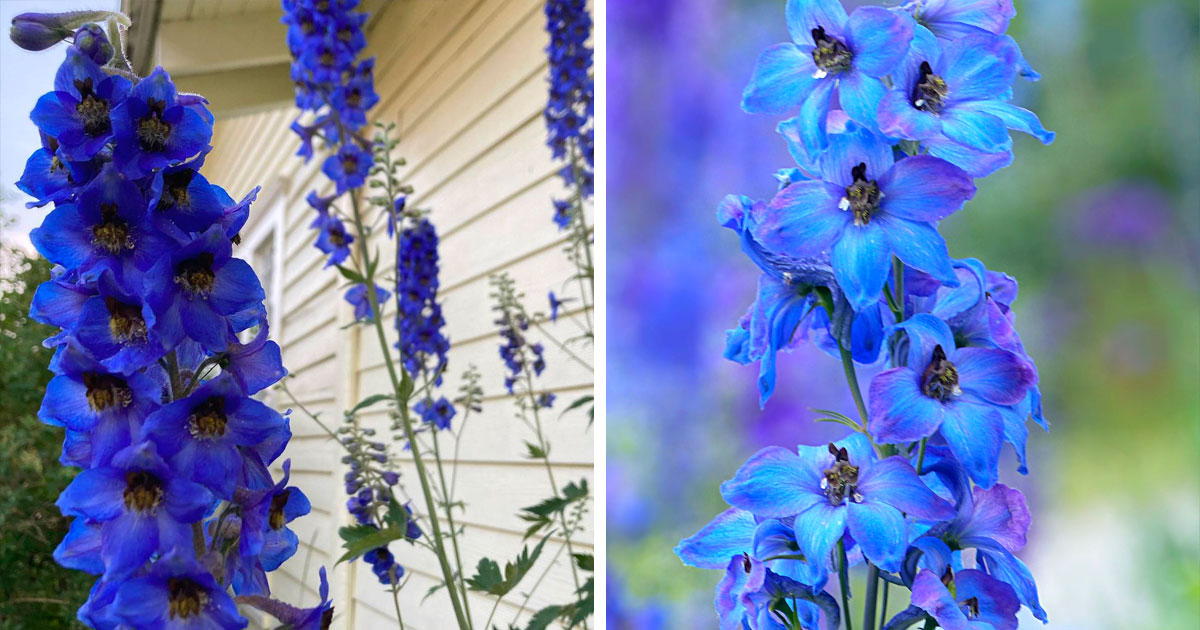
Image credits: Nested West and Oldiefan.
- Larkspur flower spikes are looser and less dense. Delphinium flower spikes are elongated and dense.
- Delphiniums are highly toxic if ingested, and larkspur are less harmful.
- Some delphiniums can reach heights of 6–7 feet, whereas larkspur can reach 2–4 feet.
Now that you understand the difference between delphiniums and larkspur, you can learn how to plant them and create the most beautiful flower garden. However, remember that these plants are slightly high-maintenance and need suitable soil, water, and temperature conditions.
How to Plant Delphiniums
Follow these steps to plant and grow delphiniums in your garden or smaller pots in your house.
- Start by preparing the soil with compost or mulch, which should be at least 1 foot deep.
- Loosen the soil so water can drain quickly.
- Make a hole and place the plant or seeds inside. Ensure the root ball is level with the soil’s surface. Then, fill up the dirt and mix in some manure or fertilizer.
- Ensure the plant gets full sun but enough protection from winds.
- Water the delphinium a few times a week or when you see it droop.
Image credits: Dulcey Lima.
How Can You Grow Delphiniums From Seeds?
Delphiniums can be grown from seeds by starting them in winter or early spring. Use fresh seeds for this. Fill a tray with 3–4 inches of loose soil mix, add the seeds, and cover with 1/8th inch of compost. Spray this mixture with water and cover the tray with a plastic bag. Keep spraying the soil so that it stays wet. Seedlings should emerge within 3–4 weeks.
Pro Tip: When transplanting the seedlings, ensure the hair-like roots don’t dry out.
Image credits: Now This is Gardening with JohnnyA.
When to Plant and Grow Delphinium?
The best time to plant delphinium is late spring to early summer. You can start sowing the seeds ten weeks before the last day of spring frost. Don’t wait for late summer because the seedlings may not sprout. Shift potted delphinium transplants in spring and place them at a distance of 2–4 inches apart.
Where to Plant Delphinium?
The best spot to grow delphinium is in an area with 6–8 hours of sun. When you place these plants in a sunny spot, they will flourish. The soil should be well-draining, and there should not be standing water, which can cause root rot.
How to Grow and Care for Delphiniums in Your Summer Garden
Now that you know how to plant delphiniums, it is crucial to understand how to help them grow and look after them. Here are some steps to follow:
Provide Stake Support
Delphiniums are hardy plants, but once they reach 12 inches, their stalks might not hold the weight of the flowers. By mid-spring, you can insert sturdy stake supports to help the plants grow steadily.
Image credits: Good Soil Nursery.
Add Fertilizer
Delphiniums require much care and attention. Apply a liquid fertilizer at the start of spring after every 2–3 weeks. Care for the delphinium by using organic fertilizers such as cow manure. If you notice yellow foliage, the delphinium needs more fertilizer.
Avoid high-nitrogen fertilizers because they can damage the plant and flower bed. With plenty of nutrition, the delphiniums will produce showy flower spikes.
Image credits: JamesDeMers.
Propagate Young Plants
You can grow more delphiniums by propagating basal cuttings. You will need a hand spade, watering can, and gloves to propagate the plant.
- Water the plant well at least 24 hours before to prevent transplant shock.
- Pick a section from the side shoots that you can cut.
- Start digging 5–6 inches from the center of the shoot.
- Lift the delphinium shoot and shake off excess soil.
- You can place these shoots in small pots indoors or in the garden in a spot that gets direct sun.
- Gently water at the base of the plant.
Here are some more useful tips for propagation.
Don’t Let the Soil Dry Out
Grow and care for your delphinium by ensuring your summer garden has well-draining soil. Keep the soil moist; otherwise, the plant will wilt. Wet soil will keep the roots cool but don’t overwater; otherwise, these finicky delphiniums will experience root rot. Wouldn’t it be great if delphinium roots were as strong as these tree roots that can battle concrete?
Care for the Flower Spikes
The delphinium’s blue flowers need to be trimmed occasionally. Cut flower stalks by leaving 2–3 shoots on young plants and 5–7 on mature plants. Once you cut the flower spikes, the new smaller stalks will develop and flower.
Image credits: Zuza-Musial.
Replant Delphiniums
You can care for delphiniums by dividing and replanting the plants every 3–4 years during the spring. Remove new little plants and place them in different locations. You can discard the hard root of the parent plant. Replanting can be a chore. Imagine how easy it would be to have a machine that moved trees for you!
Harvest Delphinium Flowers
Delphiniums have an elegant flower that will look beautiful in a vase in your house. You can harvest these tall spires of blue by cutting the flower when at least one bud is showing color and starting to open. The flowers will stay fresh in the vase for 6 to 8 days. With such gorgeous flowers, having a cool vase to match makes sense. Try out these unique vases designed to make the sprouting flowers look like flowing hair.
Prune the Plant
Prune the delphinium plants grown in pots or outdoor taller varieties every few months. Remove the mature flower spikes from the center and thin the number of shoots growing. This will encourage a second bloom again in late summer or autumn.
The Right Temperature and Humidity
Delphiniums are susceptible to getting a powdery mildew infestation when humidity is too high. They thrive in mild temperatures between 70–80 degrees Fahrenheit. Avoid planting them in areas that are too hot.
Now that you know all the steps to grow a delphinium, here’s how to keep it safe from other pests and problems.
Pests and Problems That Can Affect Delphinium Care
These are some of the most common issues that your delphinium might encounter and how you can look after it:
- Fungus like powdery mildew, gray mold, leaf spot disease, and botrytis can occur if the climate is too humid. You can combat them by ensuring the plants are in well-ventilated areas and the foliage is dry. Trim and remove the affected plants.
Image credits: Happy Sowing Happy Growing.
- Insects and critters such as slugs, mites, snails, and nematodes may infest your delphinium. You can remove them with gloves and spray insecticide on the plant. Before you start feeling guilty, remember that not all bugs are cute.
- Overwintering can damage the plant. You can prevent this by mulching, which discourages frost damage. If the plant is very young, it can be moved indoors.
- Overcrowding of delphinium plants can affect air circulation and lead to fungal problems. You can divide the new growth early on to prevent this from happening. If there are any diseased plants, remove them before the fungus spreads to the rest of the shoots.
Image credits: New Zealand Delphiniums.
- Wilting or drooping plants could be a sign of less watering or hollowing of the stems. Solve this by placing proper support stakes near the plant and watering it regularly.
How to Beautify Your Summer Garden With Delphinium Blooms
Delphiniums can make your garden look eye-catching. You can follow these steps to make their colors pop:
- Grow delphiniums in groups or bunches.
- Mix them with pastel-colored flowers to contrast their color.
- Place them near a fence for added support and wind protection.
Good landscaping can transform your garden. You can start by enhancing the beauty of your delphiniums by growing companion garden plants.
Companion Garden Plants for Your Summer Border
These are a few interesting plants you can grow with delphiniums that add to their beauty:
1. Joe Pye Weed
This plant produces showstopping puffy flowers. It has an extensive root system and can spread well. Due to its hardy roots, it can withstand dry soil and will not choke your delphinium growth. It can grow to a height of 4–6 feet tall.
2. Hyssops Bloom
These lovely flowers are striking and produce nectar that is irresistible to hummingbirds and butterflies. Their scents are intoxicating and often smell exactly like licorice or bubblegum. They are also hardy plants that pair well with delphiniums.
3. Salvias
There are many different types of salvias, and they all produce beautiful, tall flower spikes with gray-green leaves. These ornamental plants will look fabulous next to your eye-catching delphiniums. Since they also grow in cold climates, they will provide color when the delphiniums aren’t flowering.
If a delphinium seems too much work, you can try out some beautiful alternatives to this flowering plant.
Delphinium Alternatives
Delphinium flowers are elegant and gorgeous, but the plant needs high maintenance. If you are not up for the challenges of growing it but want lovely flowers, you can pick from these alternatives.
Foxglove
The foxglove plant produces purple, yellow, and white bell-shaped flowers marked with spots within. These flowers are biennial, which means they flower in the second year. They typically grow to 45–150 cm (18–60 inches).
Image credits: YangGuangWu.
Hollyhock
Hollyhock is a herbaceous flowering plant that produces white, pink, red, and sometimes yellow flowers. These gorgeous flowers appear several times yearly and decorate the plant’s stem. The plant grows by reseeding.
Image credits: congerdesign.
Baptisia
This is a striking perennial plant that needs minimum care. It is also called false indigo, and it produces vibrant pea-like blossoms. The flowers also come in white and yellow.
Image credits: Chicago Botanic Garden.

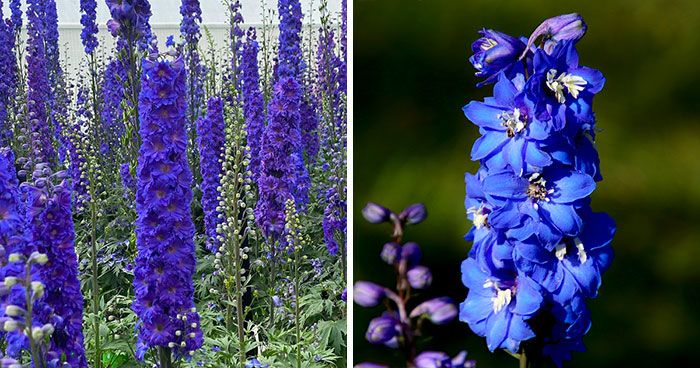
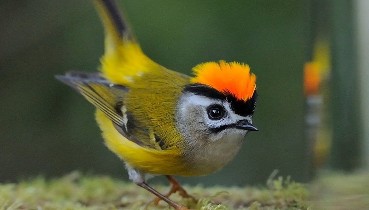 The flamecrest or Taiwan firecrest (Regulus goodfellowi2869 views
The flamecrest or Taiwan firecrest (Regulus goodfellowi2869 views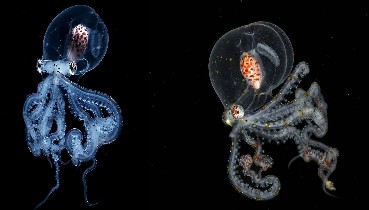 33 Stunning Winning Photos From The Close-Up Photographer576 views
33 Stunning Winning Photos From The Close-Up Photographer576 views Shark From 80 Million Years Ago Is Still Alive – It Has a Snake’s Head and Insane Teeth463 views
Shark From 80 Million Years Ago Is Still Alive – It Has a Snake’s Head and Insane Teeth463 views Charming Photos of Tiny Acrobatic Harvest Mice1303 views
Charming Photos of Tiny Acrobatic Harvest Mice1303 views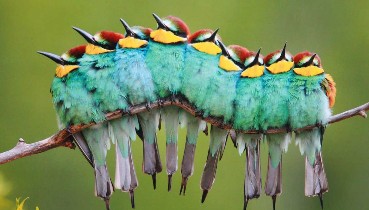 16 Pics Of Birds Cuddling Together For Warmth Will Melt Your Heart3901 views
16 Pics Of Birds Cuddling Together For Warmth Will Melt Your Heart3901 views Birds Of Paradise By Russian Artist Julia Gorina754 views
Birds Of Paradise By Russian Artist Julia Gorina754 views Aliens? Lasers? Water? What Caused the Al Naslaa Rock to Split So Precisely?3535 views
Aliens? Lasers? Water? What Caused the Al Naslaa Rock to Split So Precisely?3535 views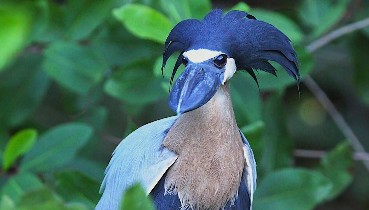 The boat-billed heron (Cochlearius cochlearius), colloquially known as the boatbill, is an atypical member of the heron family21206 views
The boat-billed heron (Cochlearius cochlearius), colloquially known as the boatbill, is an atypical member of the heron family21206 views